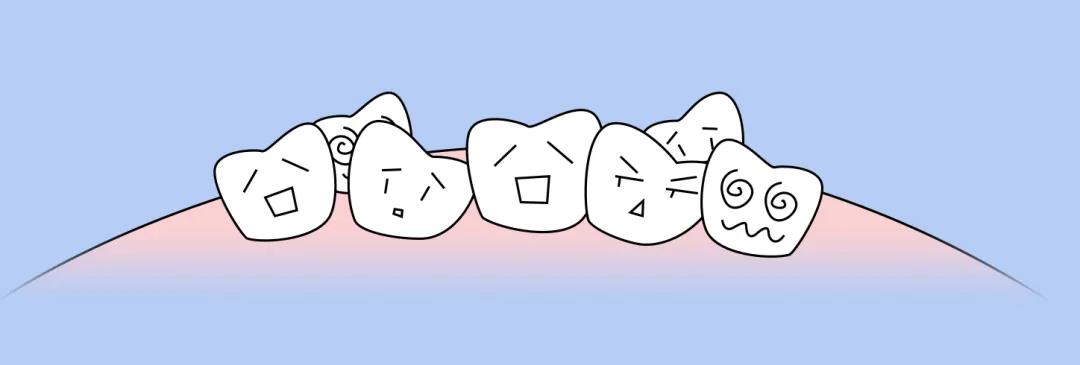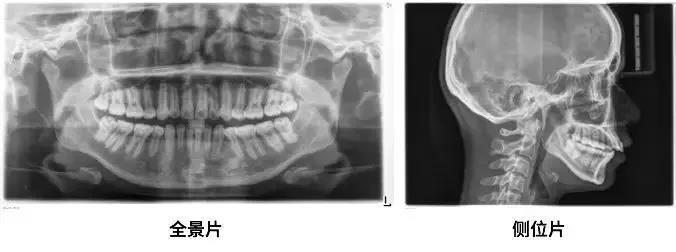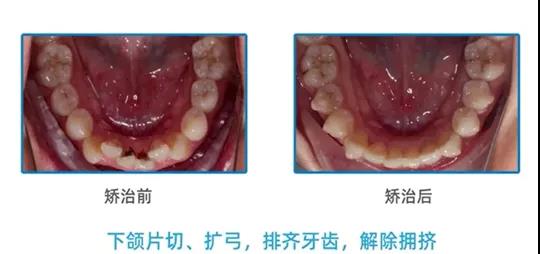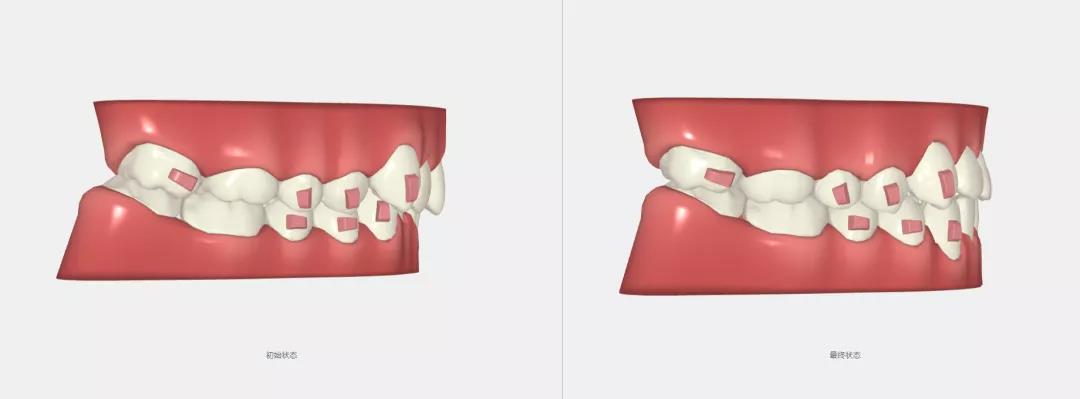 Open wechat
Open wechatWill it be warmer to squeeze your teeth in cold winter?
Big no, special no! Dental crowding, of course, requires professional orthodontics!
Dental crowding is the most common symptom in orthodontics. Usually up to 60% - 70% of patients have the problem of dental crowding. Tooth crowding will not only cause many dental diseases, such as affecting tooth cleaning, weakening the self-cleaning effect of teeth, causing periodontal disease, but also affect chewing and jaw development.
1、 What is dental crowding
As we all know, the length of the dental bed is fixed, which leads to the limited capacity of the dental bed. When the number of erupted teeth exceeds the capacity of the gums, tooth crowding will occur.
Dental crowding can be divided into simple crowding and complex crowding.
Simple crowding shows that the teeth are arranged disorderly due to insufficient space, which affects the shape of dental arch and occlusal relationship. In addition to the disorder of tooth position caused by the number of teeth, there is also an imbalance in the relationship between jaw and dental arch. It also affects the face shape of patients, sometimes accompanied by abnormal function of oral and maxillofacial system. It is a common dental deformity in medicine.

2、 Causes of tooth crowding
Genetic factors
Medically, it is believed that tooth crowding has obvious genetic characteristics, and the degree of tooth torsion can be seen in parents and offspring
Hypoplasia of jaw
The oral cavity is divided into upper jaw and lower jaw, and both upper jaw and lower jaw are called jaws. Underdevelopment can lead to less bone in the jaw than in the teeth. If the bone mass is less than the tooth mass, it will inevitably lead to crowding and dislocation, and the teeth can not be neat.

Oversized teeth
Oversized anterior teeth are also an important pathogenic factor causing tooth crowding and dislocation. If the volume of the current tooth is too large and occupies the growth space of other teeth, other teeth will not sprout according to the established shape and position, resulting in tooth dislocation
3、 Orthodontic crowding
Extraction correction
Many friends of patients with crowded teeth are embarrassed when they hear about tooth extraction and correction. They think it's a pity that a good tooth has been pulled out. I hope they can not pull out or even refuse to pull out. In fact, tooth extraction correction will not cause harm to patients. With the end of tooth correction, the missing and displaced teeth will be rearranged, and the teeth will return to normal shape, which will not affect their chewing function.
Moreover, the cases of tooth correction through tooth extraction are very common. Yo ~ about 65% of patients with crowded teeth need tooth extraction correction. In fact, following the doctor's advice after tooth extraction and taking care of the wound after tooth extraction will basically not cause harm to oral health.
Of course, there are also ways that do not need extraction correction. For tooth crowding, it is mild or moderate, such as arch expansion, slice cutting and pushing molar back.
Pantograph expansion
As the name suggests, arch expansion is to expand the dental arch so that the upper teeth can have comfortable seats.
Similar to tooth extraction and slice cutting, it is to obtain the space required for orthodontics. Generally, it is to expand the width and length of maxillary and mandibular arch. Arch expansion through orthodontics is mainly to expand the dental arch by moving the posterior teeth on both sides to the buccal side. Each side can get a gap of 1-2mm. Using this gap, the teeth can move to the correct position and complete dental correction.

Slice cutting
Slice cutting is also called "adjacent enamel removal". Through the operation of slice cutting, we can obtain the correction space and align the teeth.
In addition, when the gums shrink and there is a black triangle between the teeth, the suture can also be corrected by slice cutting to reduce the problem of black triangle.

Push molar back
Pushing molars is to move the molars in the mouth back in turn, so as to give the teeth in the anterior tooth area a space for alignment. To put it bluntly, move your molars other than wisdom teeth backward as needed to make room for alignment of your front teeth.
When performing invisible correction, the scheme of pushing and grinding teeth can be selected at the same time, which can take advantage of the full coverage of invisible braces to take all the anterior teeth before the molars as an integral anchorage. It can not only push the molars, but also reduce many side effects of traditional push molars.


